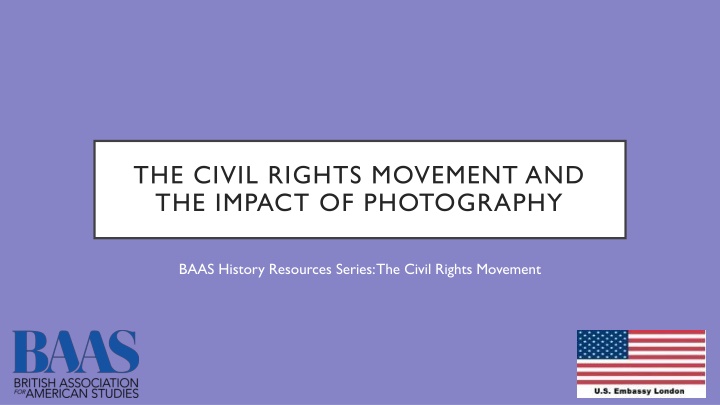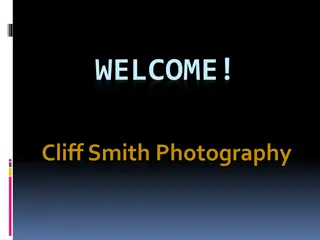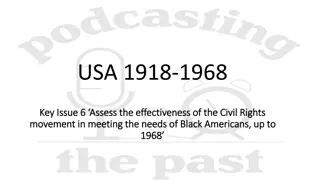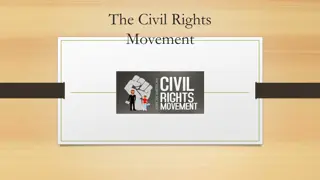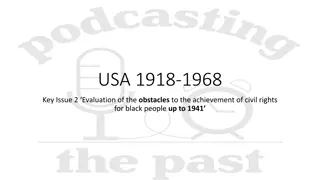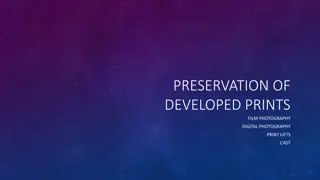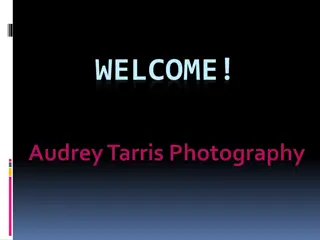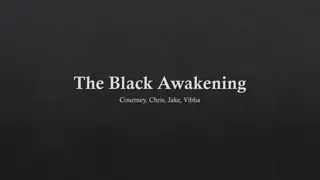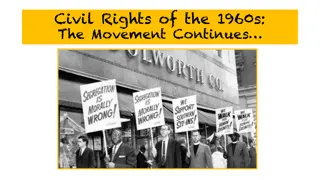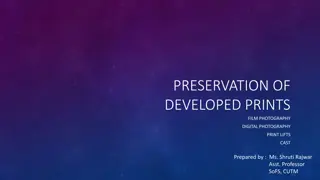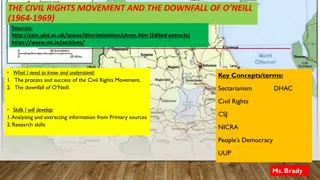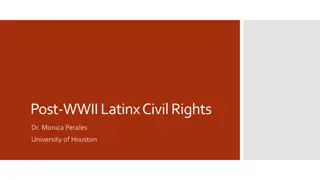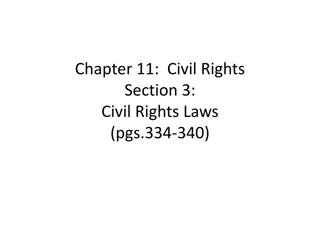The Impact of Photography on the Civil Rights Movement
Photography played a crucial role in the Civil Rights Movement by capturing the struggles of African Americans and the resistance they faced, both domestically and internationally. Images like the Birmingham photo of Walter Gadsden being attacked by police dogs highlighted the brutality and spurred international support for civil rights. Various photographers, including activists and journalists, documented pivotal moments of the movement, shaping the narrative and influencing public opinion.
Download Presentation

Please find below an Image/Link to download the presentation.
The content on the website is provided AS IS for your information and personal use only. It may not be sold, licensed, or shared on other websites without obtaining consent from the author.If you encounter any issues during the download, it is possible that the publisher has removed the file from their server.
You are allowed to download the files provided on this website for personal or commercial use, subject to the condition that they are used lawfully. All files are the property of their respective owners.
The content on the website is provided AS IS for your information and personal use only. It may not be sold, licensed, or shared on other websites without obtaining consent from the author.
E N D
Presentation Transcript
THE CIVIL RIGHTS MOVEMENT AND THE IMPACT OF PHOTOGRAPHY BAAS History Resources Series: The Civil Rights Movement
THE CIVIL RIGHTS MOVEMENT AND PHOTOGRAPHY Photography was hugely important to the Civil Rights Movement it enabled people all around the United States to see both the efforts of African Americans to protest for their rights, and the lengths white supremacists would go to to stop them. Within the Cold War context, there was an important international dimension as well how could America claim to represent ideas of democracy and freedom abroad when their was such denial of civil rights at home? Martin Luther King, Jr recognized the importance of the media when he said: The brutality with which officials would have quelled the black individual became impotent when it could not be pursued with stealth and remain unobserved. It was caught as a fugitive from a penitentiary is often caught in gigantic circling spotlights. It was imprisoned in a luminous glare revealing the naked truth to the whole world. Martin Luther King
CASE STUDY: BIRMINGHAM PHOTO One of the most famous photographs of the movement is this one, taken by Bill Hudson. Hudson was a white photojournalist and former war correspondent. The image was taken in Birmingham, Alabama in 1963. During the Birmingham Campaign, the Southern Christian Leadership Conference (SCLC) led by Martin Luther King, Jr. sought to raise awareness of segregationist practices in the city. Access the image here: https://en.wikipedia.org/wiki/File:Bir mingham_campaign_dogs.jpg This photograph shows 17-year-old Walter Gadsden being attacked by police dogs. As nonviolence was a core ethos of SCLC, this image came to symbolize a non-violent response to aggression. The image was published prominently in the New York Times, alongside other images of people (including children) being sprayed with powerful fire hoses. Diane McWhorter wrote that this image drove "international opinion to the side of the civil rights revolution.
WHO WERE THE PHOTOGRAPHERS? There were hundreds of men and women who took photographs during the Civil Rights Movement. There motivations varied: some were photojournalists aiming to capture the reality of the day, some were protestors or activists, a few were amateurs, and some were even white supremacists. There were more male than female photographers of the movement, due to both the higher number of male photographers working in journalism and to the danger and harassment that women faced on the street during protests. There was no official photographer of the Movement. What follows is a selection of different case studies. Think about how each photographer s experiences might have shaped the kinds of images that they took.
Danny Lyons was a white activist with the Student Nonviolent Coordinating Committee from 1962. He practiced New Journalism where the photographers get submerged and involved in their stories rather than remaining objective. That a black [John Lewis] and a white from Alabama [Sam Shirah] and a New York Jew [Lyons] were all close friends and actually lived together says something very important about the cross fertilizations that were going on throughout the movement. - Danny Lyons DANNY LYONS In August 1963, Lyons snuck his camera into the Leesburg Stockade, where 30 young women were being jailed for protesting. By photographing the poor conditions in which the women were kept, Lyons helped secure their freedom. You can access the photograph here: https://snccdigital.org/people/danny- lyon/
Gordon Parks was the first African American man to work for LIFE magazine from 1948 to 1972. Parkswas a committed humanitarian who documented the Civil Rights Movement and was given access to photograph many famous events, including the March on Washington in 1963. I saw that the camera could be a weapon against poverty, against racism, against all sorts of social wrongs. - Gordon Parks. GORDON PARKS Parks was also a novelist, poet, memoirist, filmmaker, and composer. Parks worked for the New Deal agency the Farm Security Administration. It was part of a series that documented the working class families of Washington DC. You can access some of this photography here: https://www.gordonparksfoundation.org/gordon- parks/photography-archive
Charles Moore was a white photojournalist and chief photographer for The Montgomery Advisor. He became a freelance photographer in 1962. TheMontgomery Advertiser was a typically segregationist publication with separate Negro News sections. However, Moore stated that The newspaper tried very hard to portray everything fairly. He photographed events such as the Birmingham Campaign (1963) and the Selma marches (1965). One of his most famous photographs was of Martin Luther King, Jr being arrested for loitering in 1958. You can access the image here: https://en.wikipedia.org/wiki/Charles_Moore_(photogra pher)#/media/File:Martin_Luther_King,_Jr._Montgomer y_arrest_1958.jpg CHARLES MOORE
Doris Derby was an African American activist. She worked for various organizations, including SNCC. Derby was involved in grassroots activism, particularly in Mississippi. She described herself as a field worker with [a] camera. She would often take images of other grassroots activists. Although her work was not shared widely for many years, as coverage focused on dramatic events and images of leaders like, Martin Luther King, Jr, Derby s work has been shared in more recent years. This includes the Road to Freedom: Photographs of the Civil Rights Movement, 1956-1968 exhibition in 2018. Derby took a photograph of June Johnson, who was only fourteen when she joined the movement. She organized voter drives with SNCC, endured violent beatings, and continued to challenge racist practices in Greenwood, Mississippi. You can access some of Derby s images here: https://www.theguardian.com/artanddesign/2022/apr/12/doris-derby- obituary DORIS DERBY
WHY WAS PHOTOGRAPHY IMPORTANT? Many historians have asserted the importance of photography to the Civil Rights Movement: Through forced confrontations-between black and white, constitutional rights and segregationist practices, the genteel progressive image of the New South and the dehumanizing Old South reality-the thousands of men, women, and children who participated in Project C presented a watching world with the contradictions of contemporary southern race relations. They vividly and visually challenged an entire economic and social regime of power. Leigh Raiford When you picture the civil rights movement, which images come to mind? If you are mong the more than 200 million Americans who have come of age since the 1960s, the odds are good that a predictable set of photographs helps you think about the movement. Among them are surely images from the Soutuh of fire hoses and attack dogs turned on peaceful protestors; well dressed youths taunted, punched, and kicked at sit-ins at segregated lunch counters; Freedom Riders bombed and beaten while integrating interstate buses; black children harassed for attending previously all-white schools; voter- rights marchers clubbed and gassed by state troopers; and perhaps an image or two from the North or West of white antibusing violence or a Black Panther protest. In both the public imagination and our history books, the civil rights story is overwhelmingly one of well-behaved black protestors victimized by racist and violent whites. Martin Berger
WORKS CITED Martin A. Berger, Freedom Now! Forgotten Photographs of the Civil Rights Struggle (Berkley & London: University of California, 2013). Emily Brady, I Take the Pictures as I See Them : Doris Derby as Womanist, Activist and Photographer in the Civil Rights Movement, Journal of American Studies 56.4 (2022): 565-588. Doris Derby, Doris Derby: A Civil Rights Journey (London: MACK, 2021). Steven Kasher, The Civil Rights Movement: A Photographic History, 1954-1968 (New York & London: Abbeville Press Publishers, 1996). Martin Luther King, Jr., Why We Can t Wait (New York: Signet, 1964). Diane McWhorter, Carry Me Home: Birmingham, Alabama: The Climactic Battle of the Civil Rights Revolution (New York & London: Simon and Schuster, 2002). Leigh Raiford, Imprisoned In A Luminous Glare: Photography and the African American Freedom Struggle (Chapel Hill: The University of North Carolina Press, 2011), Deborah Willis, Reflections in Black: A History of Black Photographers, 1840 to the Present (New York & London: W. W. Norton, 2000).
